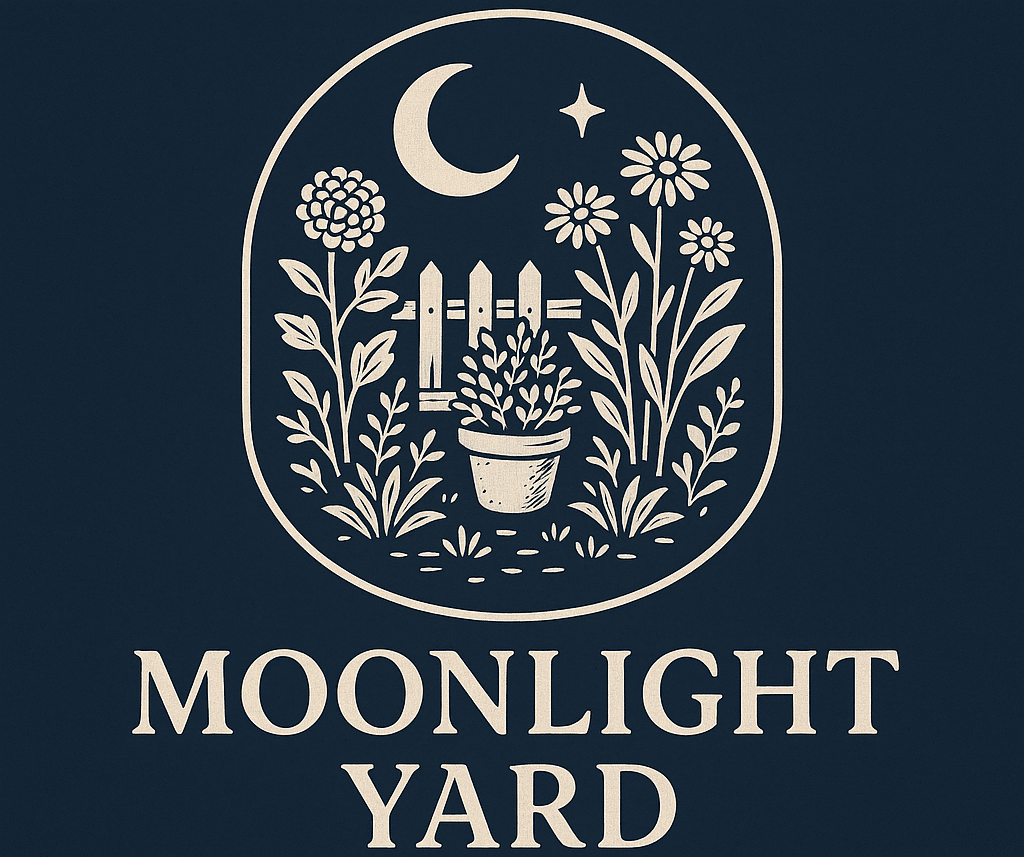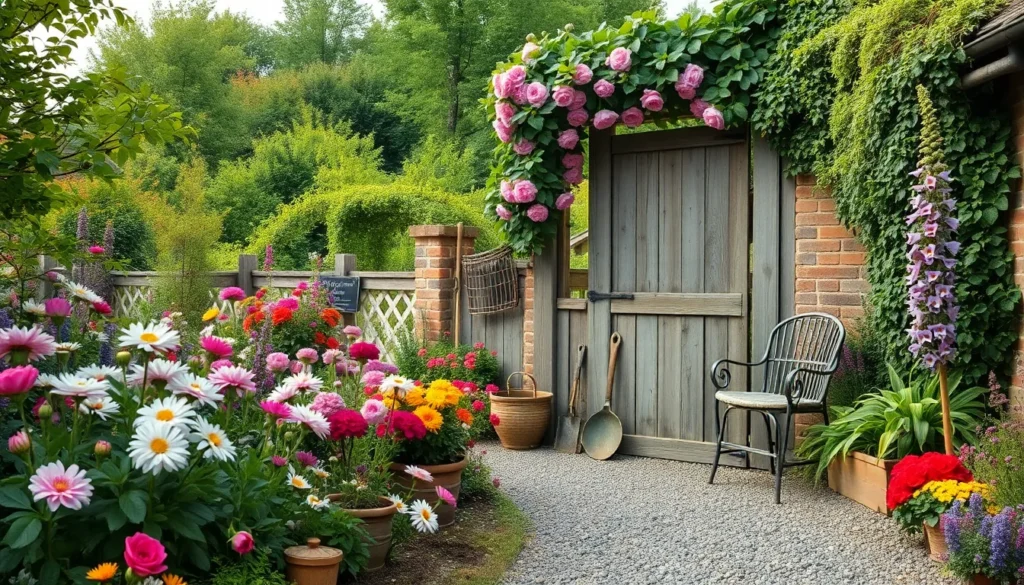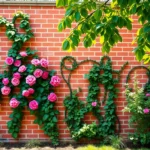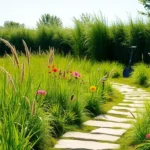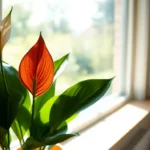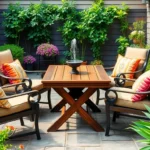We’ve all dreamed of stepping into a charming cottage garden where colorful blooms spill over weathered stone paths and climbing roses frame rustic doorways. These enchanting spaces capture the essence of English countryside living while creating a welcoming retreat right in our own backyards.
Cottage gardens aren’t just beautiful – they’re surprisingly practical too. We’ll discover how these seemingly wild gardens actually follow time-tested principles that maximize growing space while minimizing maintenance. From selecting the perfect mix of perennials and annuals to creating natural pathways that invite exploration, cottage gardening offers endless possibilities for both novice and experienced gardeners.
Whether we’re working with a sprawling suburban lot or a cozy urban space, cottage garden design adapts beautifully to any setting. We’ll explore how to blend traditional elements like picket fences and herb borders with modern touches that suit our contemporary lifestyles.
Create a Charming Cottage Garden Entrance
Your cottage garden’s entrance sets the tone for the entire outdoor experience. We’ll explore three essential elements that transform an ordinary garden opening into an enchanting pathway that captures the timeless appeal of English countryside design.
Design a Rustic Garden Gate
Wooden gates create the most authentic cottage garden entrance, with weathered cedar or oak providing natural character that improves with age. Consider installing a picket gate with varying board heights to echo traditional cottage styling, or choose a simple board and batten design for clean rustic appeal.
Metal hardware adds functional charm to your cottage garden gate design. We recommend using black iron hinges, thumb latches, and decorative handles that complement the weathered wood aesthetic. These elements create visual interest while ensuring your gate operates smoothly for years to come.
Sizing your gate correctly ensures both practicality and proportion within your cottage garden entrance. Standard widths range from 36 to 42 inches for pedestrian access, though we suggest measuring your exact space to accommodate wheelbarrows or garden carts if needed.
Add a Winding Gravel or Stone Path
Gravel pathways offer the quintessential cottage garden entrance experience, with their gentle crunching sound and informal appearance perfectly matching the relaxed garden style. Choose pea gravel in neutral tones like cream, gray, or warm brown to complement your plantings without overwhelming the natural cottage aesthetic.
Stone stepping stones create charming alternatives to continuous gravel paths, allowing you to establish rhythm and flow through your cottage garden entrance. We prefer using irregularly shaped flagstone or fieldstone pieces spaced 18 to 24 inches apart for comfortable walking while encouraging slower, more contemplative movement through the space.
Edging materials help define your cottage garden path while preventing gravel migration into planted areas. Natural options include reclaimed brick, weathered timber boards, or collected river rocks that maintain the informal cottage garden character while providing practical boundaries.
Plant Climbing Roses on Arbors
Climbing roses transform simple arbors into spectacular cottage garden entrance features, with varieties like ‘Eden’, ‘New Dawn’, and ‘Zephirine Drouhin’ offering continuous blooms and disease resistance. These selections provide months of color while requiring minimal maintenance once established in your cottage garden design.
Arbor construction should prioritize durability to support mature climbing roses, which can reach 8 to 12 feet in height and considerable weight. We recommend using cedar or pressure treated lumber for the frame, with sturdy 4×4 inch posts anchored at least 24 inches deep for stability.
Training techniques help climbing roses establish quickly on your cottage garden arbor, creating the lush entrance you envision. Begin by securing main canes horizontally along the arbor structure, which encourages lateral growth and increased flower production throughout the climbing rose display.
Establish Traditional Cottage Garden Plant Combinations
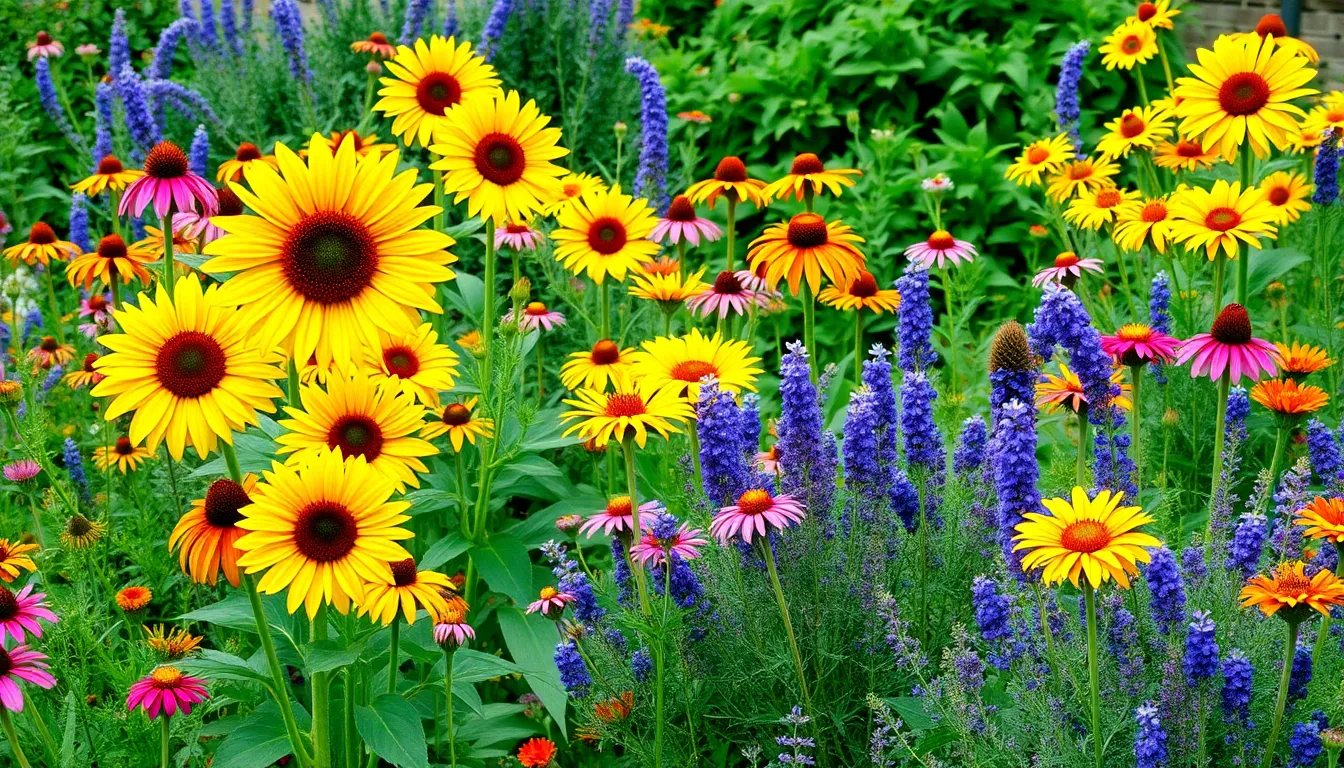
Creating the perfect cottage garden foundation starts with selecting plants that capture the essence of traditional English countryside charm. We’ll focus on three key strategies that ensure your garden blooms beautifully throughout the seasons while maintaining that coveted informal cottage garden aesthetic.
Mix Perennials with Self-Seeding Annuals
Perennials like peonies and coneflowers provide the structural backbone of our cottage garden design. These reliable bloomers return year after year, creating consistent anchor points throughout our planting beds. Coneflowers offer stunning purple and pink blooms that attract butterflies, while peonies deliver dramatic spring displays with their full, fragrant flowers.
Self-seeding annuals add spontaneity and charm by sprouting unpredictably around the garden. Marigolds create vibrant orange and yellow patches that appear in surprising locations each season. Zinnias contribute bold colors ranging from deep reds to soft pastels, often emerging in pathways and garden corners where their seeds have scattered naturally.
This combination creates a garden that feels both planned and wild. We get the reliability of returning perennials alongside the delightful surprises that self-seeding plants bring to our cottage garden industry.
Layer Plants by Height and Bloom Time
Tall plants form the backbone of our cottage garden design by creating vertical interest and defining garden boundaries. Sunflowers reach impressive heights and provide dramatic focal points, while trellised vines like clematis climb supports to add vertical beauty. These larger specimens work best towards the back or sides of our planting areas.
Shorter plants like creeping thyme and daisies work perfectly for front or middle layers of our garden beds. Creeping thyme spreads naturally between stepping stones and releases fragrance when walked upon. Daisies provide cheerful white blooms that complement taller flowering companions throughout the growing season.
Strategic bloom timing ensures continuous color from spring through fall. Early bloomers like daffodils give way to summer stars like roses and lavender, followed by late season performers such as asters and chrysanthemums. This careful sequencing creates a cottage garden that maintains visual interest across multiple seasons.
Include Fragrant Herbs Throughout Borders
Rosemary, thyme, and lavender serve dual purposes in our cottage garden by providing both fragrance and culinary value. Rosemary’s needle-like foliage releases aromatic oils when brushed against, while its blue flowers attract beneficial pollinators. Thyme creates low-growing mats that release pleasant scents with every footstep.
Lavender stands out as the quintessential cottage garden herb with its silver-green foliage and purple flower spikes. These drought-tolerant plants thrive in sunny locations and provide months of continuous blooms that bees and butterflies adore.
Strategic herb placement throughout our borders enhances the garden’s biodiversity by attracting beneficial insects like ladybugs and lacewings. Mint and chamomile add additional fragrance layers, though mint requires containment to prevent aggressive spreading. Lemon balm contributes citrusy scents and delicate white flowers that complement other cottage garden favorites.
Build Classic Cottage Garden Structures

Foundation elements like fences, sheds, and raised beds establish the framework for your cottage garden’s rustic charm. These structural components support plant growth while creating the informal yet organized feel that defines traditional cottage garden design.
Install Weathered Wooden Fences and Trellises
Weathered wooden fences form the backbone of cottage garden boundaries while supporting climbing plants like roses and vines. We recommend using cedar or pine boards that have naturally aged or been treated to achieve that coveted weathered appearance. Position trellises strategically along fence lines to create vertical growing spaces for clematis, honeysuckle, and climbing roses.
Construction becomes simpler when you choose materials that complement your garden’s natural aesthetic. Attach horizontal supports every 12 to 18 inches on trellises to provide adequate climbing structure for heavier vines. Install fence posts 6 to 8 feet apart for stability while maintaining the informal cottage garden look.
Add a Vintage Garden Shed or Potting Bench
Vintage garden sheds provide essential storage while serving as charming focal points in cottage garden layouts. We suggest incorporating weathered wood siding and traditional pitched roofs to maintain design consistency with your fences and trellises. Position your shed near garden beds to create convenient access for tools and supplies during gardening tasks.
Potting benches offer workspace functionality without requiring permanent structure installation. Choose designs with lower shelving for pot storage and upper work surfaces at comfortable heights for transplanting and seed starting. Add vintage touches like galvanized metal accents or distressed paint finishes to enhance the nostalgic cottage garden atmosphere.
Create Raised Beds with Natural Stone Edging
Natural stone edging brings order to cottage garden plantings while preserving their informal character. We recommend using fieldstone, limestone, or sandstone in irregular shapes rather than perfectly cut blocks to maintain the rustic aesthetic. Build raised beds 6 to 8 inches high for improved drainage and easier maintenance access.
Stone selection impacts both durability and visual appeal in your cottage garden design. Layer stones without mortar to allow for natural settling and plant root expansion between gaps. Create gentle curves rather than sharp angles when laying stone borders to complement the flowing, organic nature of cottage garden plantings.
Design Informal Planting Schemes
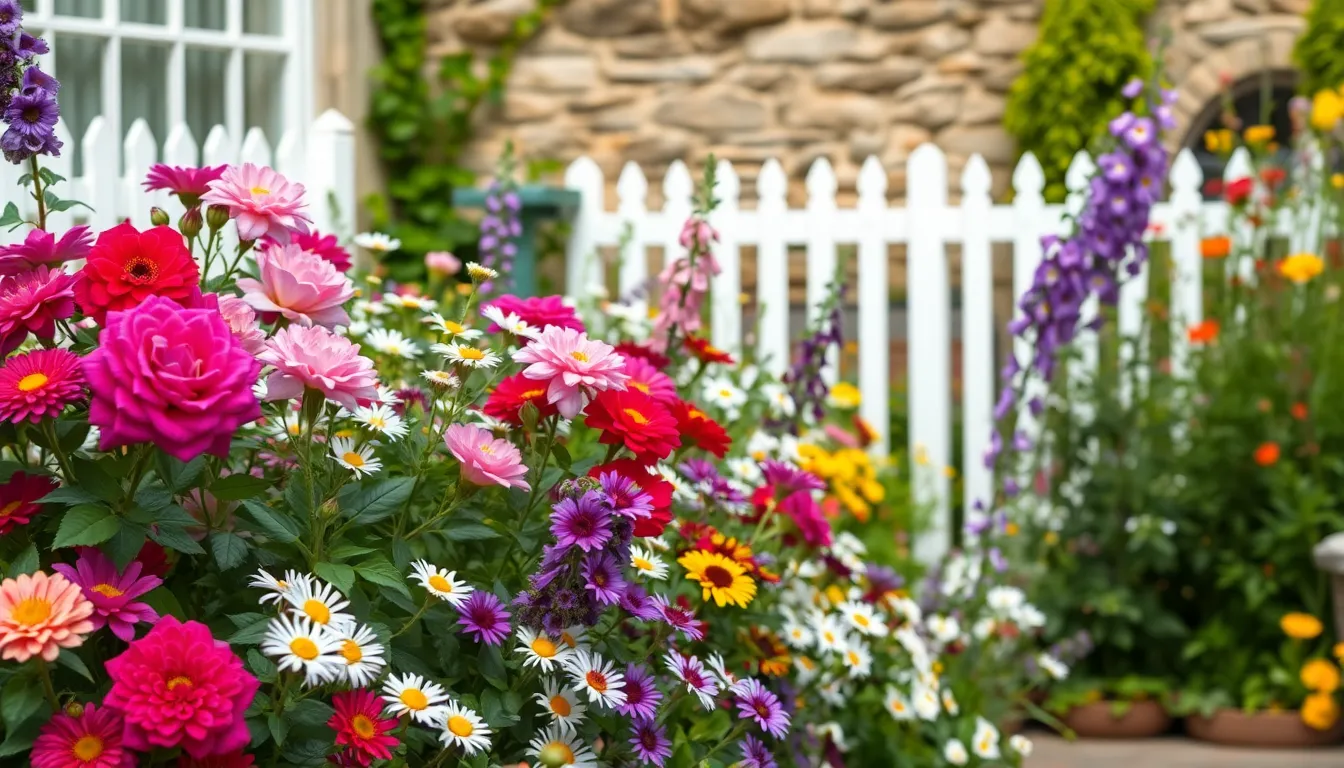
We’ll create the quintessential cottage garden look by designing planting schemes that celebrate beautiful disorder rather than rigid formality. Our approach combines mixed plantings, layered borders, and natural growth patterns to achieve that coveted “controlled chaos” aesthetic.
Embrace the “Controlled Chaos” Aesthetic
Relaxed maintenance defines the cottage garden experience, making these gardens perfect for busy homeowners who want beauty without constant upkeep. We recommend letting plants grow naturally instead of pruning them into perfect shapes or maintaining razor-sharp edges around borders.
Mixed plantings create visual interest by combining roses, daisies, foxgloves, sweet peas, lavender, and herbs throughout the same growing spaces. These diverse plant combinations establish the informal look that makes cottage gardens so appealing to gardeners seeking a more natural aesthetic.
Natural elements like stone walls, bird baths, and white picket fences serve as charming focal points that enhance the garden’s overall appeal. We position these features strategically to create gathering spots where beneficial insects and birds can thrive alongside our plantings.
Allow Plants to Naturalize and Self-Sow
Self-sowing plants like foxgloves and sweet peas contribute significantly to the informal, natural appearance that defines cottage garden style. We encourage these plants to drop seeds naturally, creating surprise blooms in unexpected locations throughout the growing season.
Naturalizing techniques involve allowing plants to spread organically rather than confining them to designated areas. This approach creates a sense of organic growth and beauty that evolves naturally over time without our constant intervention.
Layered borders develop naturally when we use a mix of trees, shrubs, perennials, and bulbs that establish themselves at different heights and bloom times. These plantings create visual depth while requiring minimal maintenance once they’re established in their preferred growing conditions.
Create Cottage Garden Color Palettes
Vibrant blooms in pastel shades and bright colors ensure continuous flowering throughout the growing seasons when we mix annuals and perennials strategically. We focus on combinations that provide overlapping bloom times to maintain color from spring through fall.
Soft hues like whites, creams, and blues create romantic ambiance that defines the cottage garden aesthetic. These gentler colors serve as perfect backdrops for more vibrant blooms while maintaining the overall harmony of our planting schemes.
Seasonal continuity becomes achievable when we select plants that bloom at different times, ensuring our cottage garden maintains its colorful appeal from early spring bulbs through late-season perennials and herbs.
Incorporate Edible Plants in Cottage Garden Style
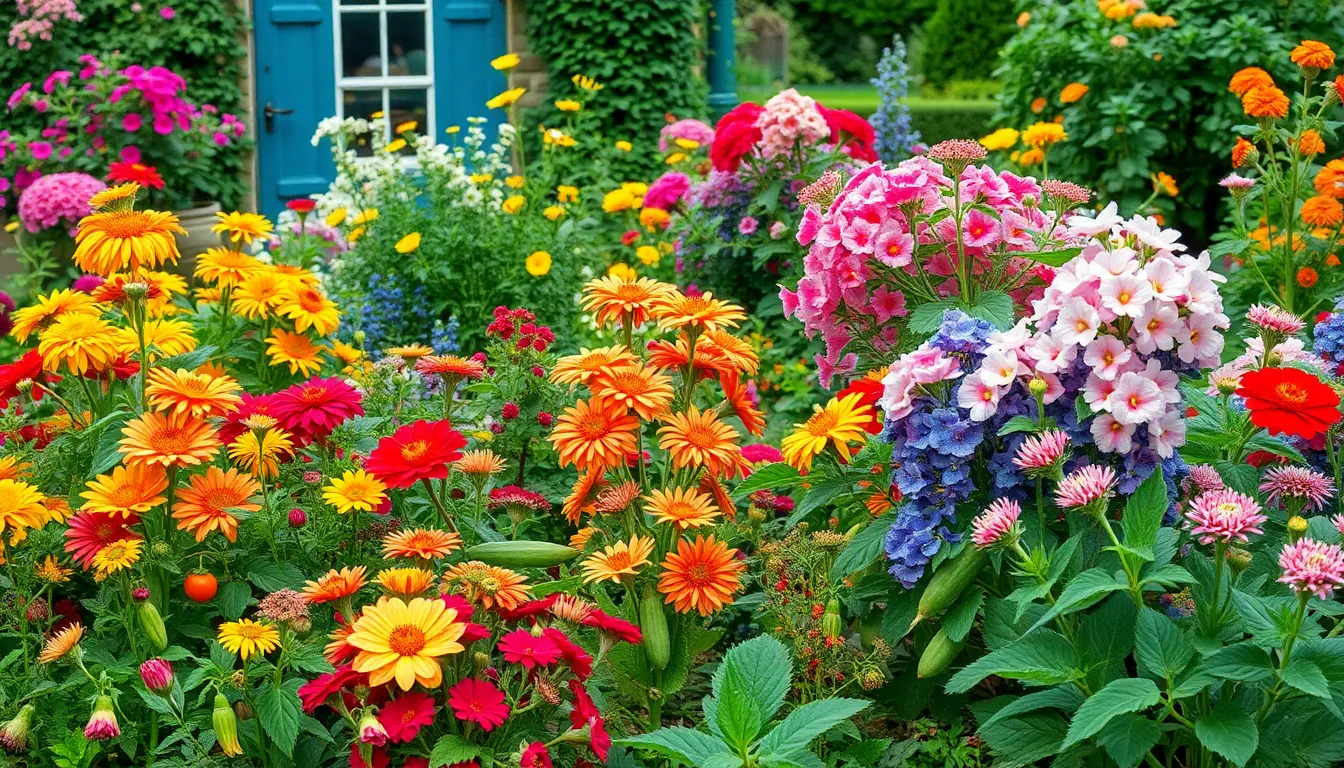
We’ll transform our cottage garden into a productive paradise where beauty and utility dance together in perfect harmony. The informal, densely planted nature of cottage gardens makes them ideal for seamlessly weaving edible plants throughout ornamental displays.
Blend Vegetables with Ornamental Flowers
Intersperse cherry tomatoes and cucumbers among traditional cottage flowers like hollyhocks, mallow, and lavender to create stunning visual combinations. We maximize growing space while improving pollination and adding unexpected pops of color throughout our garden beds.
Choose compact vegetables and herbs that complement rather than compete with ornamental plants. Nasturtium offers edible leaves and flowers perfect for salads and soups, while parsley, sage, and thyme provide culinary value without sacrificing aesthetic appeal.
Position vegetables strategically between flowering plants to maintain the cottage garden’s characteristic informal look. Small vegetables naturally blend into the relaxed cottage style, creating productive pockets that visitors might not immediately recognize as food plants.
Plant Heritage Fruit Trees and Berry Bushes
Establish crabapples and other heritage fruit trees as focal points or along garden boundaries to provide structure, seasonal interest, and delicious harvests. These trees offer spring blossoms, summer shade, and autumn fruits while maintaining the traditional cottage garden aesthetic.
Incorporate berry bushes like raspberries and blackcurrants throughout the garden for their decorative flowers and productive harvests. Berry bushes fit naturally into cottage gardens’ relaxed style, providing vertical interest and seasonal color changes.
Plant berry bushes along pathways or near seating areas where we can easily harvest fresh fruits during morning garden walks. Their flowers attract beneficial insects while their fruits provide ingredients for homemade jams and fresh eating.
Create Herb Spirals and Kitchen Gardens
Build herb spirals from stone or brick to maximize vertical growing space while creating striking architectural features. These spirals accommodate culinary and medicinal herbs in a compact footprint, saving valuable ground area for other plantings.
Design kitchen gardens with raised beds near our home for easy access to herbs, leafy greens, and other cooking essentials. We’ll combine practical growing spaces with pollinator friendly flowers to maintain cottage garden charm while ensuring convenient harvests.
Position kitchen gardens where they integrate seamlessly with ornamental borders rather than standing apart as separate utilitarian spaces. Raised beds can follow irregular shapes typical of cottage gardens, using natural stone edging to blend with existing industry features.
Add Vintage Garden Accessories and Decor
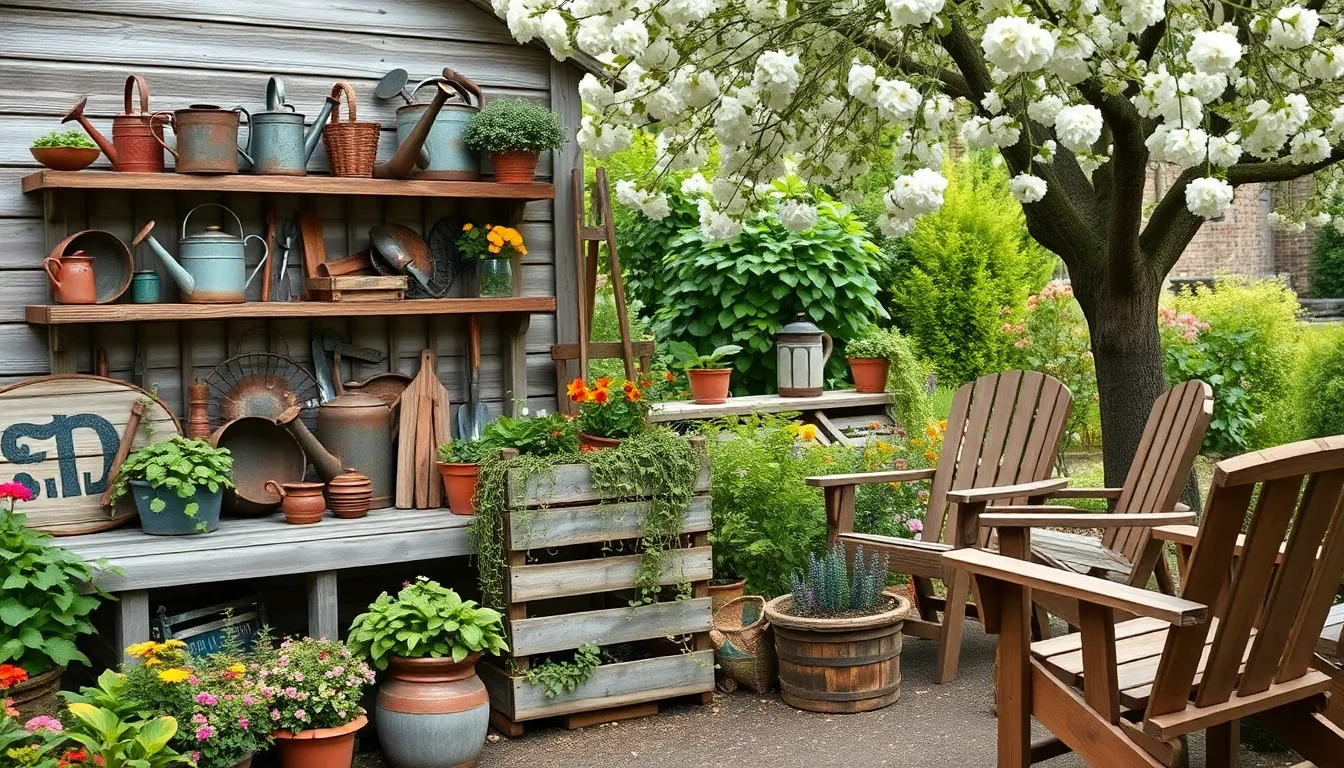
Vintage accessories breathe life into cottage gardens by creating focal points that tell stories of gardening traditions. These charming elements enhance the nostalgic atmosphere while serving practical purposes throughout our outdoor spaces.
Display Antique Watering Cans and Garden Tools
Antique watering cans make stunning decorative elements when arranged along garden borders or near entrance gates. We recommend grouping galvanized watering cans of different sizes on weathered wooden shelves or vintage plant stands to create visual interest. Old garden tools like hand spades, pruning shears, and cultivators look beautiful when hung from hooks on garden shed walls or fence posts.
Rusty patina adds authentic character to these vintage pieces, so we embrace the weathered appearance rather than restoring them to perfect condition. Position watering cans near herb gardens or flower beds where they’d naturally belong, making the display feel organic rather than staged. Antique tool collections work especially well when mounted on reclaimed barn wood or displayed in vintage wheelbarrows filled with seasonal flowers.
Use Repurposed Containers as Planters
Repurposed containers transform everyday objects into charming planters that enhance cottage garden whimsy. Old ceramic crocks, galvanized buckets, and wooden crates create perfect homes for trailing plants like nasturtiums and sweet alyssum. We’ve found that vintage colanders work beautifully for herbs since their drainage holes eliminate the need for additional modifications.
Enamelware bowls and chipped teapots make delightful small planters for succulent displays or herb cuttings. Large items like old bathtubs, wheelbarrows, and wash tubs accommodate bigger plantings such as vegetable gardens or dramatic flower arrangements. Metal containers develop beautiful patina over time, while wooden pieces blend naturally with the informal cottage garden aesthetic.
Paint colors should complement rather than compete with plant materials, so we typically choose muted greens, weathered blues, or natural wood tones. Grouping containers of varying heights creates ever-changing displays that draw the eye through different levels of the garden.
Install Classic Garden Benches and Seating
Classic garden benches provide essential resting spots while contributing to the romantic cottage garden atmosphere. We prefer weathered teak or painted wooden benches that complement the informal style rather than formal metal designs. Position benches to take advantage of garden views, morning sun, or fragrant plantings like roses and lavender.
Vintage iron benches with curved backs work beautifully when surrounded by climbing roses or positioned beneath flowering trees. We recommend placing seating areas along informal pathways where visitors can pause to enjoy different garden vistas. Small bistro sets create intimate spaces perfect for morning coffee or afternoon tea among the flowers.
Adirondack chairs and vintage metal lawn chairs add casual comfort to cottage gardens while maintaining the relaxed aesthetic. We like to arrange seating in conversational groupings that encourage gathering and garden appreciation. Weathered finishes and natural materials ensure these pieces age gracefully alongside the evolving garden plantings.
Create Seasonal Interest in Your Cottage Garden
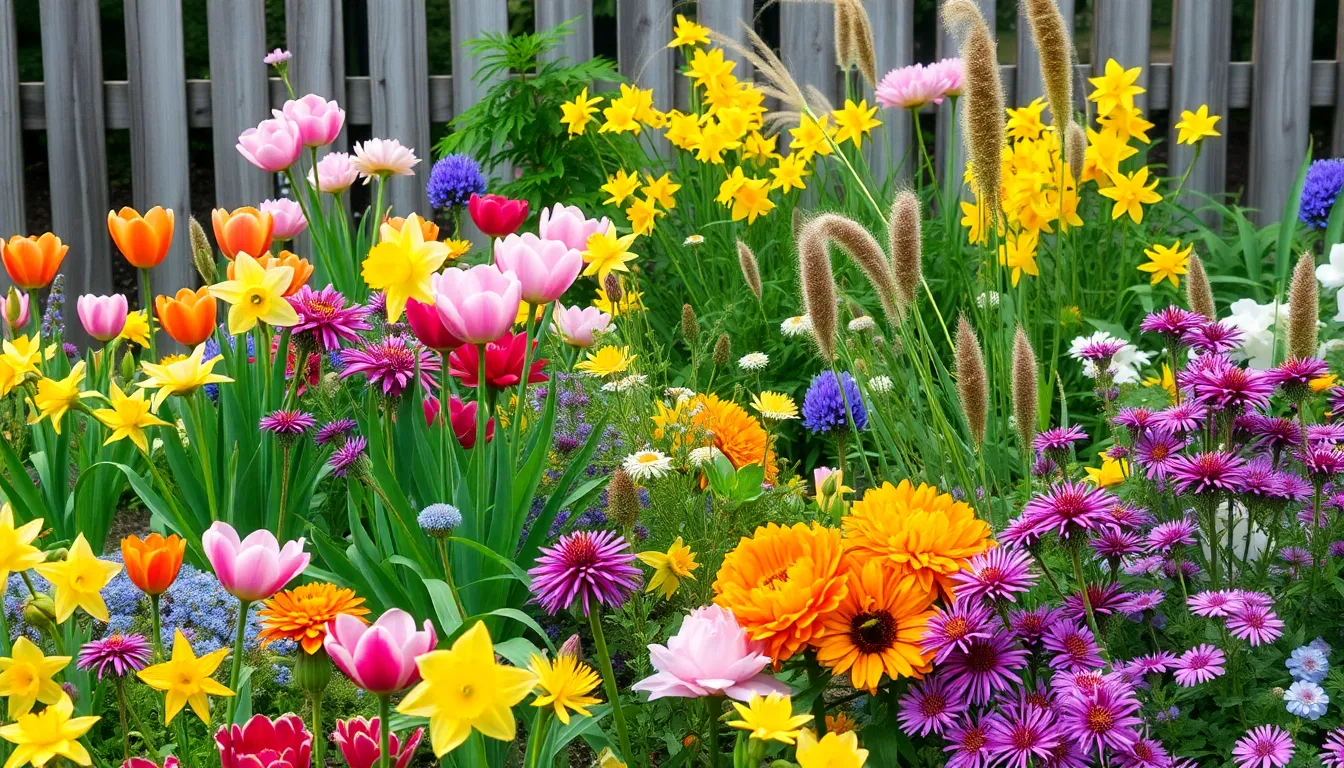
Building on your cottage garden’s charm with vintage accessories and decor, we can enhance the garden’s appeal throughout the year by planning for continuous seasonal displays. Cottage gardens truly shine when they offer visual interest across all four seasons.
Plan for Spring Bulb Displays
Spring bulb plantings create the first spectacular show in our cottage gardens after winter’s dormancy. We plant early-blooming bulbs like tulips, daffodils, and hyacinths in fall to ensure vibrant displays emerge when the growing season begins.
Tulips provide bold color statements in April and May, while daffodils naturalize beautifully throughout cottage garden borders. Hyacinths add intense fragrance and dense flower clusters that complement the informal cottage style. We layer these bulbs at different depths to extend the blooming period from early March through late May.
Complementary early perennials like forget-me-nots and creeping thyme fill gaps between bulb clusters. These ground-covering plants create seamless transitions between seasonal displays while maintaining the cottage garden’s characteristic abundance. Crocus and snowdrops planted beneath deciduous shrubs provide the earliest spring color before other plants awaken.
Ensure Summer-Long Blooming Succession
Summer succession planting keeps our cottage gardens colorful from June through September with carefully timed plantings. We create layered borders using trees, shrubs, perennials, and annuals to maintain continuous color throughout the growing season.
Early summer perennials like peonies and irises kick off the season, followed by mid-summer bloomers such as coneflowers and bee balm. Late summer performers including asters and rudbeckia carry color into fall. We plant fast-growing annuals like zinnias and cosmos at two-week intervals to ensure constant blooms.
Deadheading spent flowers encourages repeat blooming in many cottage garden favorites. Delphiniums produce second flushes when cut back after their first bloom, while roses continue flowering with regular deadheading. Self-seeding annuals like calendulas and bachelor’s buttons provide spontaneous color throughout summer without replanting.
Include Plants for Autumn Color and Winter Structure
Autumn interest comes from strategic plantings of late-season bloomers and foliage plants that provide spectacular fall displays. We incorporate plants like asters, sedum, and Joe Pye weed for rich autumn colors ranging from deep purples to golden yellows.
Ornamental grasses such as fountain grass and feather reed grass add winter texture and movement to cottage garden borders. These grasses create architectural interest when left standing through winter months, providing structure when herbaceous plants have died back. Japanese maples and burning bush contribute brilliant fall foliage before revealing interesting branch patterns.
Evergreen shrubs and trees provide essential winter structure in our cottage gardens. Boxwood hedging maintains garden definition year-round, while pine and spruce trees create vertical anchors. We plant winter-blooming shrubs like witch hazel and winter jasmine to provide unexpected color during dormant months.
Berry-producing plants such as elderberry and rose hips extend visual interest into winter while attracting birds to our cottage gardens. These plants bridge the gap between autumn’s final blooms and spring’s first awakening, ensuring our gardens remain captivating throughout the year.
Maintain Your Cottage Garden Naturally
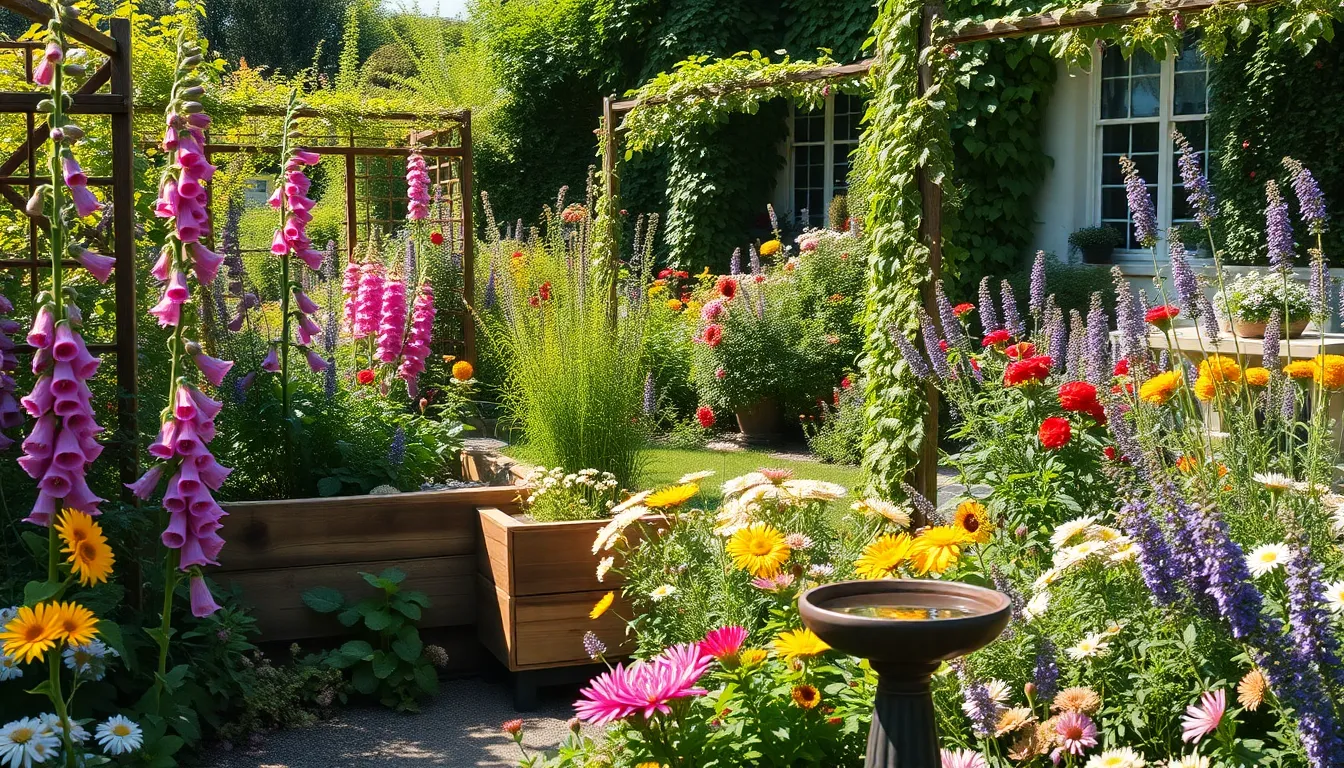
Cottage gardens thrive when we embrace natural gardening practices that work with nature rather than against it. These time-tested methods create healthier ecosystems while maintaining the effortless charm that defines cottage garden style.
Practice Organic Gardening Methods
Dense planting serves as nature’s own weed suppression system in cottage gardens. We cover all soil with closely spaced plants, reducing the need for traditional mulch while creating that lush, abundant look cottage gardens are famous for. This technique naturally prevents weeds from establishing while conserving soil moisture.
Raised beds bring order to dense cottage garden plantings without sacrificing their informal appeal. We construct these beds using natural stone or weathered wood to maintain rustic charm while improving drainage and soil quality. The elevated structure makes maintenance easier and creates natural boundaries between different plant communities.
Vertical growing maximizes space and adds visual depth to our cottage gardens. We incorporate climbing plants like clematis, sweet peas, and honeysuckle on trellises, arbors, and existing structures. These vertical elements create layers of interest while making efficient use of limited garden space.
Organic mulching materials like shredded leaves, straw, or compost feed the soil while suppressing weeds naturally. We apply these materials around established plants, avoiding the stems to prevent moisture related issues. Natural mulches break down over time, continuously improving soil structure and fertility.
Encourage Beneficial Wildlife and Pollinators
Diverse flower plantings attract a wide range of pollinators and beneficial insects throughout the growing season. We include native wildflowers, herbs like lavender and rosemary, and traditional cottage favorites such as foxgloves and daisies. This variety ensures continuous nectar sources from spring through fall.
Wildflower meadow sections within our cottage gardens provide essential habitat for bees, butterflies, and other wildlife. We dedicate corners or border areas to naturalized plantings of black eyed Susan, purple coneflower, and native grasses. These areas require minimal maintenance once established while supporting local ecosystems.
Fragrant plants strategically placed throughout the garden serve dual purposes as pollinator magnets and sensory delights. We position aromatic herbs like thyme, oregano, and mint near pathways and seating areas. Their scents attract beneficial insects while creating pleasant experiences for garden visitors.
Water features like shallow bird baths or small ponds provide essential resources for garden wildlife. We place these elements in partially shaded areas to prevent algae growth while ensuring easy access for birds and beneficial insects. Clean, fresh water sources significantly increase biodiversity in cottage garden spaces.
Master the Art of Gentle Garden Management
Minimal pruning maintains the natural, slightly wild appearance that characterizes authentic cottage gardens. We allow plants to develop their natural forms, intervening only to remove dead, damaged, or diseased growth. This approach reduces maintenance while preserving the informal charm cottage gardens are known for.
Selective plant thinning prevents overcrowding while maintaining the dense, abundant look we desire. We remove weaker seedlings and divide perennials as needed, redistributing healthy plants to fill gaps elsewhere in the garden. This practice ensures plants have adequate resources while maintaining visual fullness.
Natural pest management relies on beneficial insects and companion planting rather than chemical interventions. We encourage predatory insects by providing diverse habitats and avoiding pesticides that harm beneficial species. Plants like marigolds, nasturtiums, and garlic naturally deter common garden pests.
Secluded seating areas tucked into plantings create peaceful retreats for garden observation and enjoyment. We position benches or small chairs where they’re partially hidden by surrounding plants, maintaining sight lines to appreciate the garden’s natural beauty. These quiet spots allow us to monitor plant health and enjoy wildlife activity.
Conclusion
Creating your dream cottage garden is more achievable than you might think. We’ve shared the essential elements that transform any space into a charming English countryside retreat – from rustic gates and winding paths to perfectly mixed plantings and vintage accessories.
Remember that cottage gardens thrive on beautiful disorder rather than rigid perfection. Let your plants self-sow naturally embrace the informal charm and focus on creating layers of color texture and fragrance throughout the seasons.
Whether you’re working with a sprawling backyard or a compact urban space these timeless design principles will help you cultivate a garden that’s both beautiful and bountiful. Start with one or two elements that speak to you and watch your cottage garden dreams bloom into reality.
Frequently Asked Questions
What is a cottage garden style?
A cottage garden is a charming gardening style inspired by the English countryside, characterized by colorful blooms, rustic features, and informal planting schemes. This design maximizes growing space while minimizing maintenance through “controlled chaos” aesthetics. It combines ornamental flowers, herbs, vegetables, and climbing plants in a relaxed, natural arrangement that celebrates beautiful disorder over rigid formality.
How do I create an entrance to my cottage garden?
Create a charming cottage garden entrance with three essential elements: a rustic wooden gate with black iron hardware, a winding gravel or stone pathway, and climbing roses on arbors. Use weathered cedar or pine for authentic appeal, add stone stepping stones for character, and train climbing roses for vertical beauty and low maintenance once established.
What plants work best in cottage gardens?
Mix perennials like peonies and coneflowers with self-seeding annuals such as marigolds and zinnias. Layer plants by height using tall varieties like sunflowers and clematis for vertical interest, while shorter plants like creeping thyme fill the front. Include fragrant herbs like rosemary, lavender, and thyme throughout borders to attract beneficial insects and enhance biodiversity.
Can I include vegetables in my cottage garden?
Yes! Blend beauty and utility by interspersing vegetables like cherry tomatoes and cucumbers among ornamental flowers. Use compact varieties and herbs like nasturtium for culinary value and visual appeal. Plant heritage fruit trees and berry bushes for structure, and create herb spirals or kitchen gardens to maximize space while maintaining the cottage garden aesthetic.
How do I maintain year-round interest in my cottage garden?
Plan for continuous seasonal displays by planting spring bulbs like tulips and daffodils, using succession planting for summer blooms, and including late-season bloomers for autumn color. Add evergreen shrubs and ornamental grasses for winter structure, plus berry-producing plants for extended visual interest. This ensures your cottage garden remains captivating throughout all seasons.
What structures should I include in my cottage garden?
Incorporate weathered wooden fences and trellises for climbing plants, vintage garden sheds as focal points, and natural stone edging for raised beds. Use naturally aged cedar or pine for authentic charm, add potting benches for functionality, and create irregular bed shapes for rustic appeal. These structures enhance organization while maintaining the informal cottage garden feel.
How do I maintain a cottage garden naturally?
Use organic gardening methods with dense planting to suppress weeds and retain soil moisture. Employ raised beds for better drainage and organization, encourage beneficial wildlife with diverse plantings, and practice gentle garden management with minimal pruning. Allow plants to self-sow naturally and use natural pest management techniques to preserve the informal cottage garden charm.
What accessories enhance cottage garden charm?
Display antique watering cans and garden tools as decorative storytelling elements. Use repurposed containers as whimsical planters, add classic garden benches for seating, and incorporate vintage touches throughout. These accessories serve practical purposes while enriching the nostalgic ambiance, creating stone walls and bird baths as natural focal points that enhance the romantic cottage garden atmosphere.
